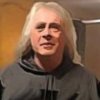Hi, I like all of these but I think doing the reflection requires more work. In Gary's tutorial he uses a lot of blur & then high levels of transparency which gives a decent type reflection, but if this isn't done as drastically you can see the "arced" floral pattern in the refection which is arcing in the wrong direction, it should arc in the same direction as the reflected object. Just pointing this out




 Reply With Quote
Reply With Quote






Bookmarks